MURRAY ADVOGADOS
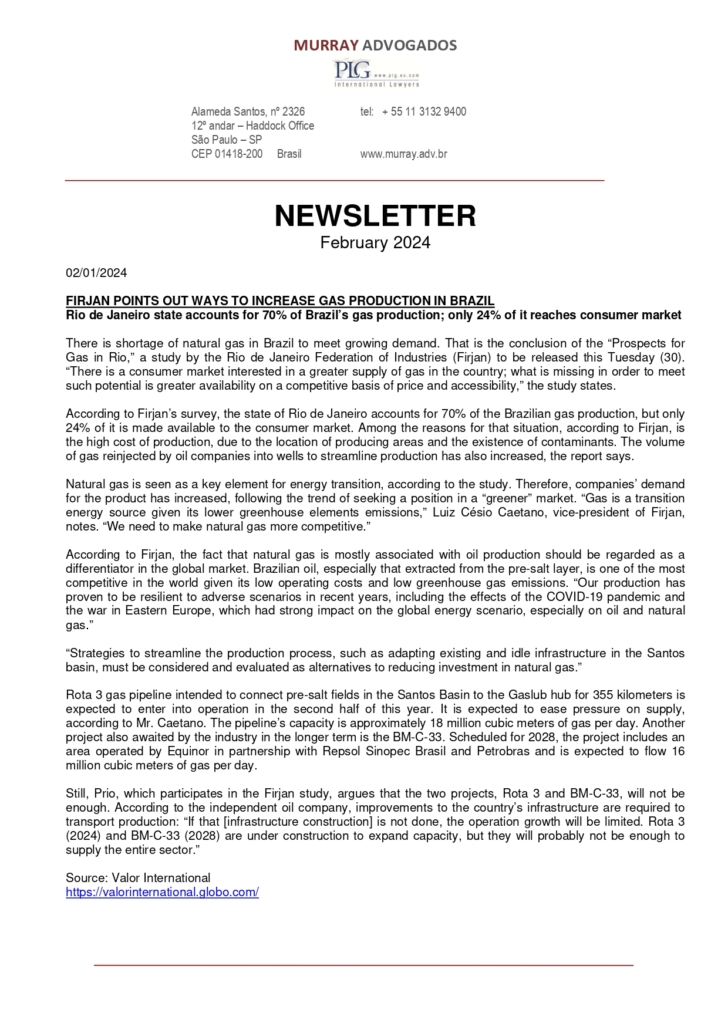
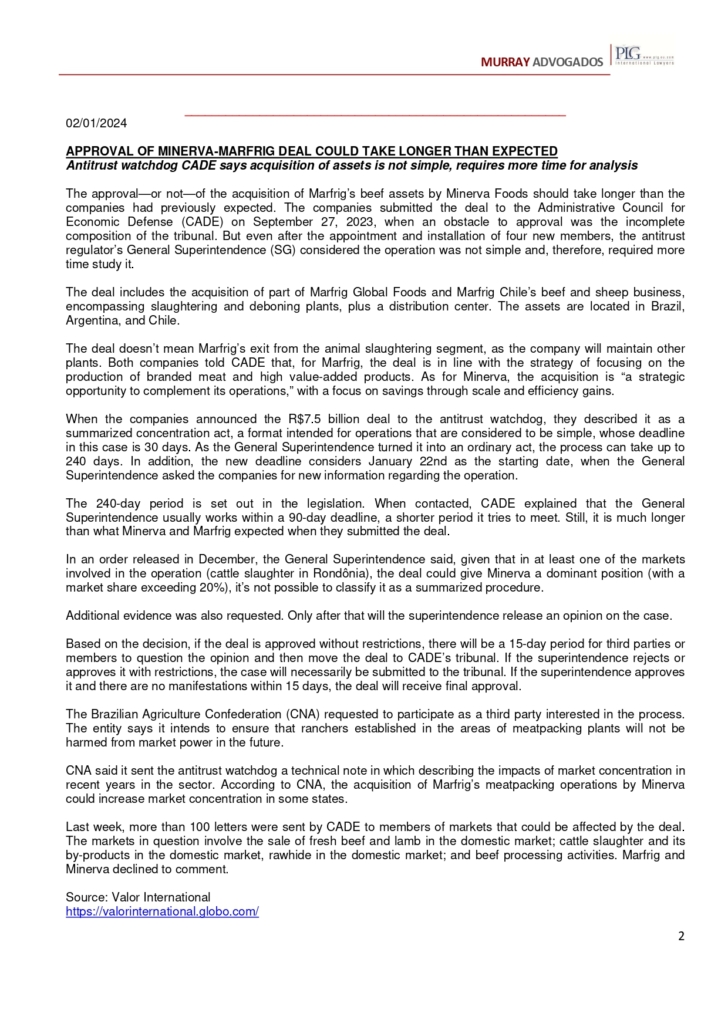
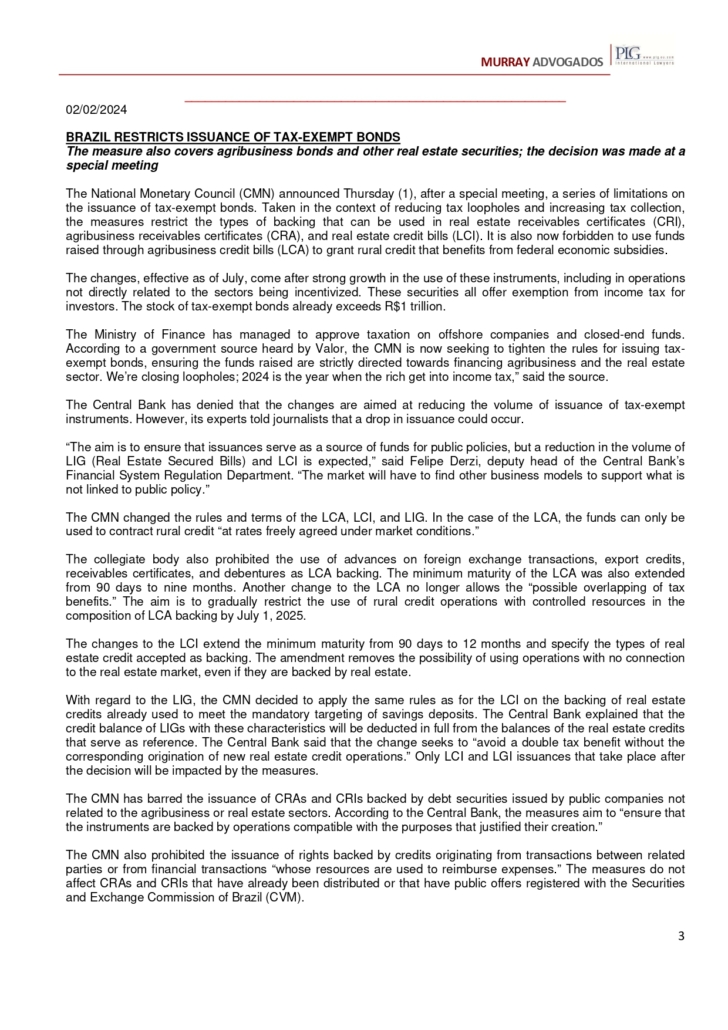
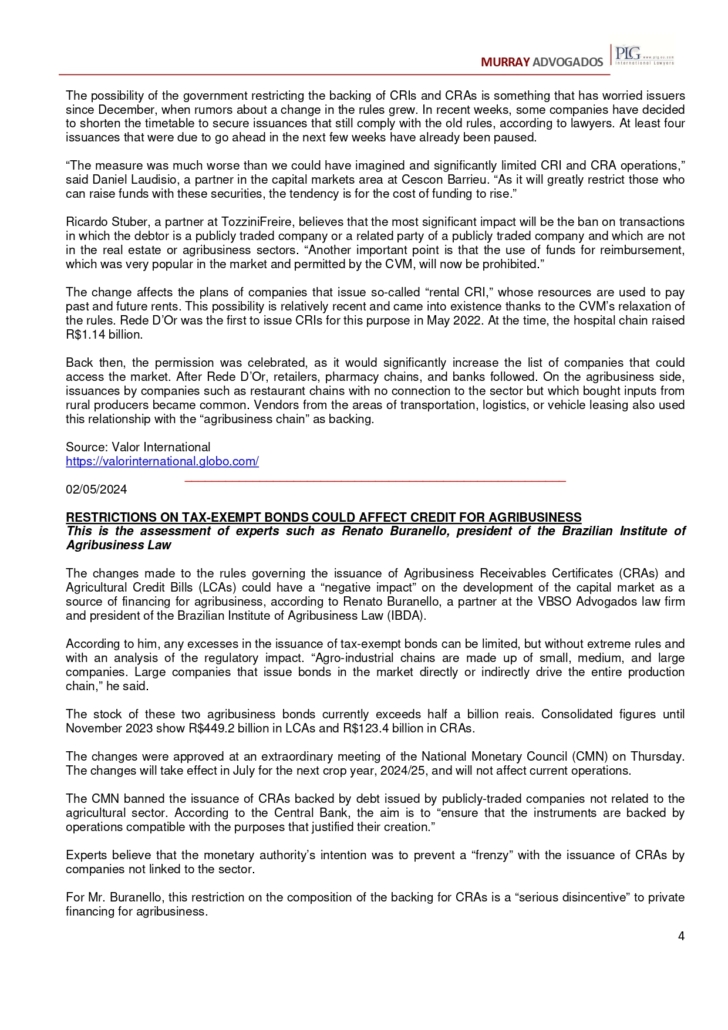
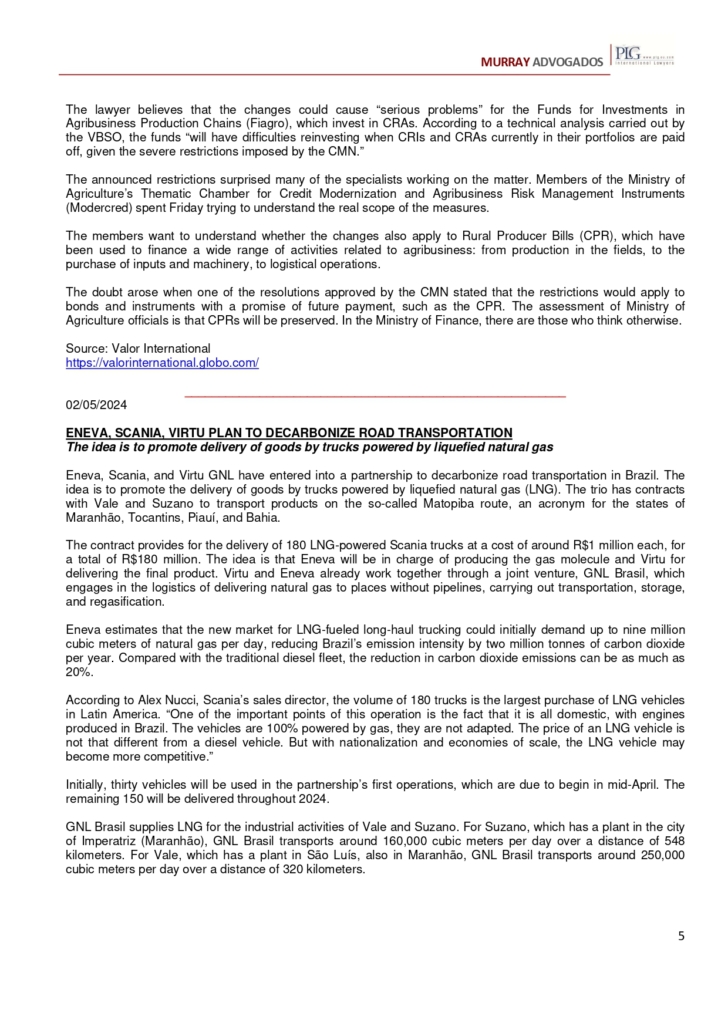
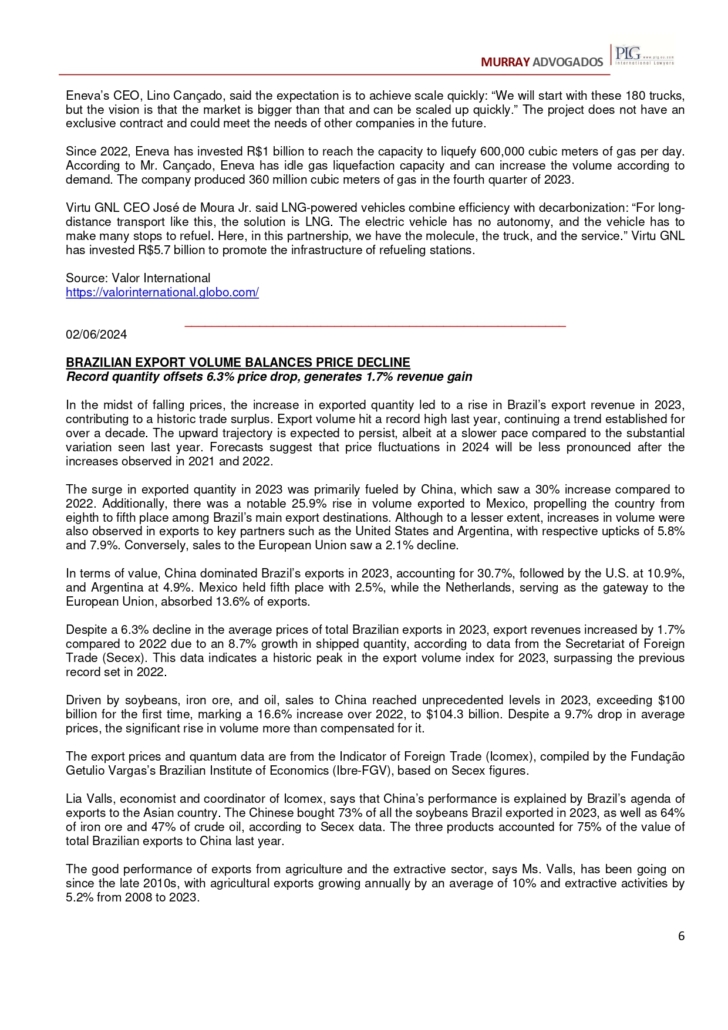
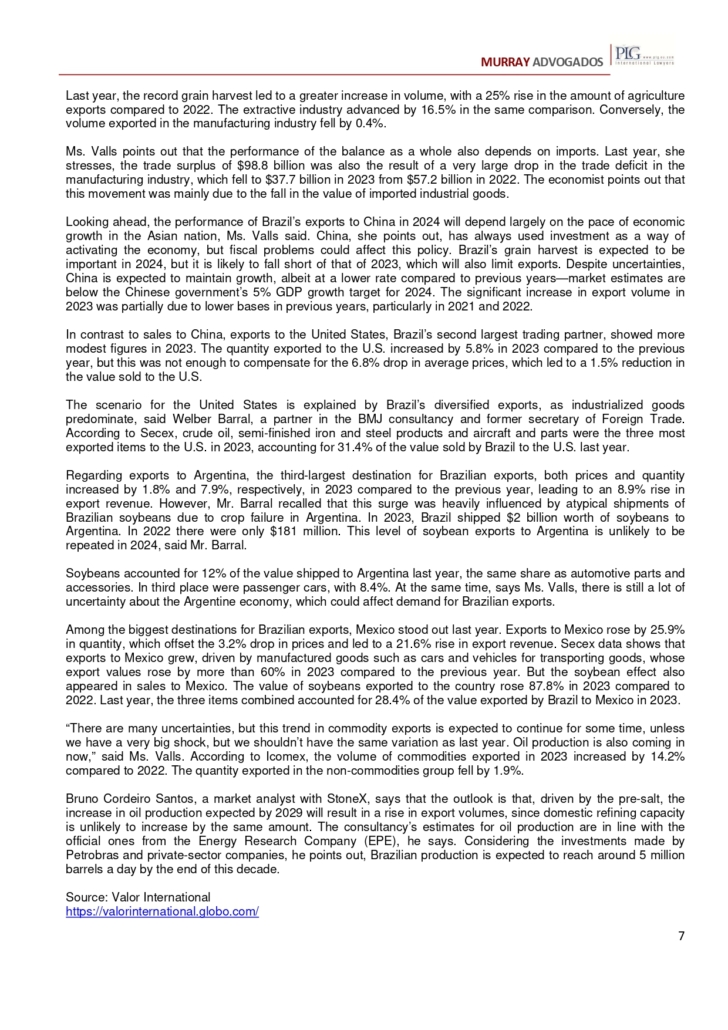
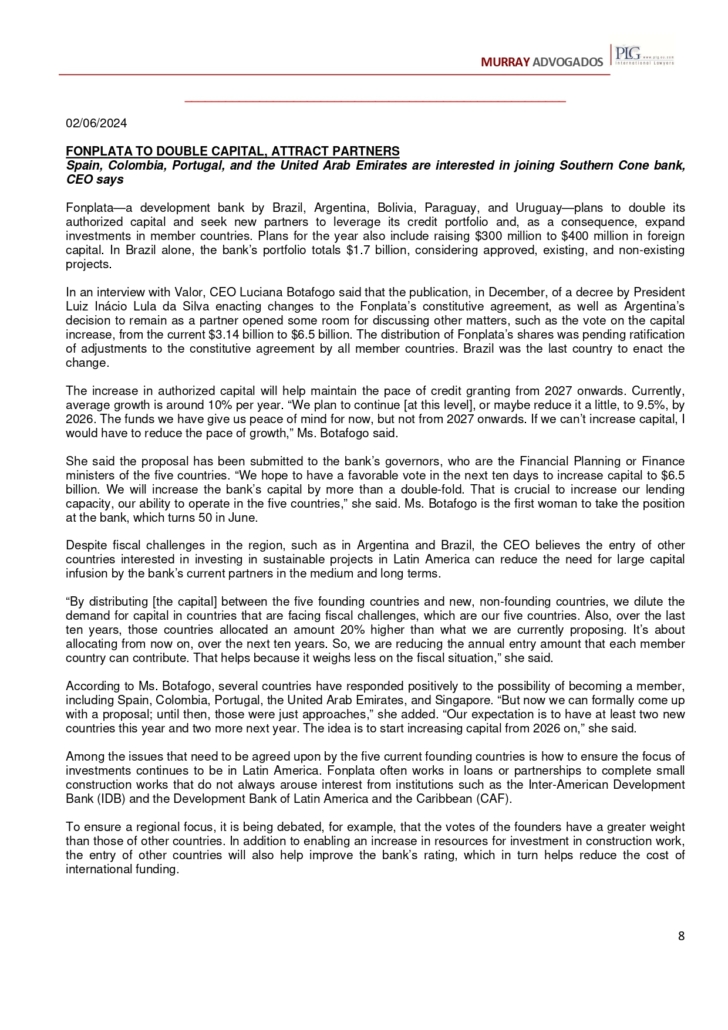
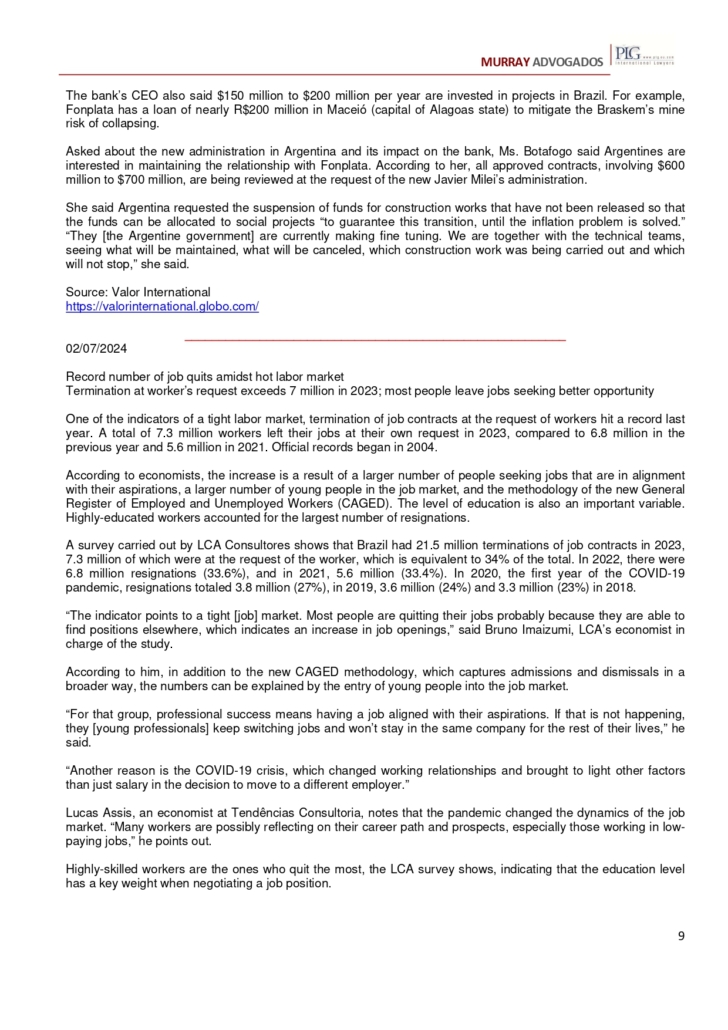
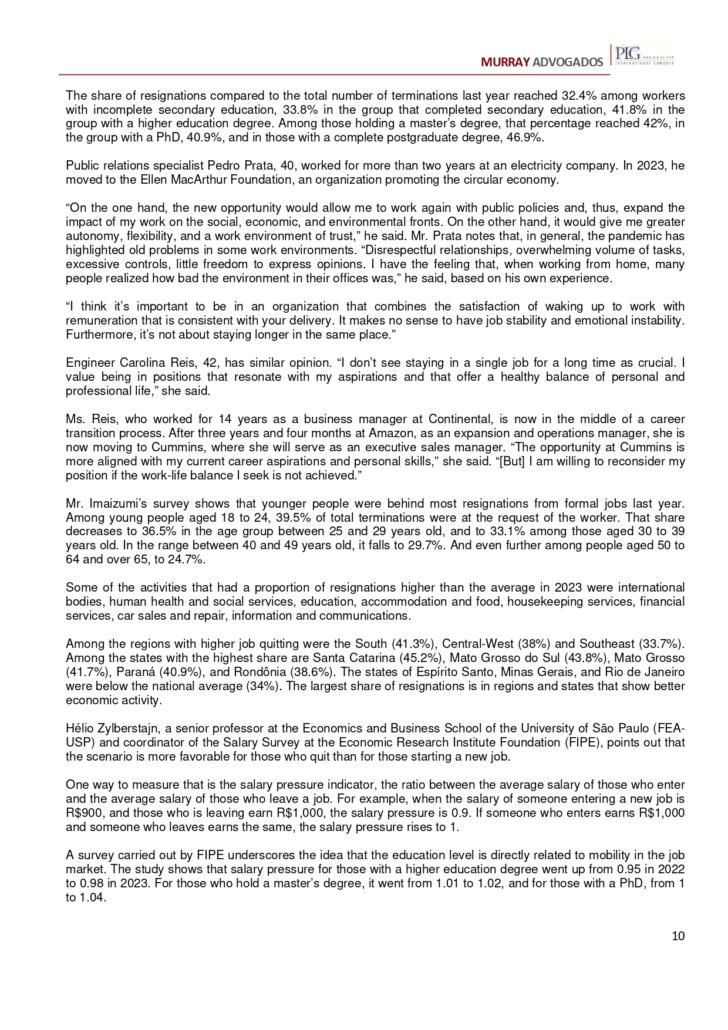
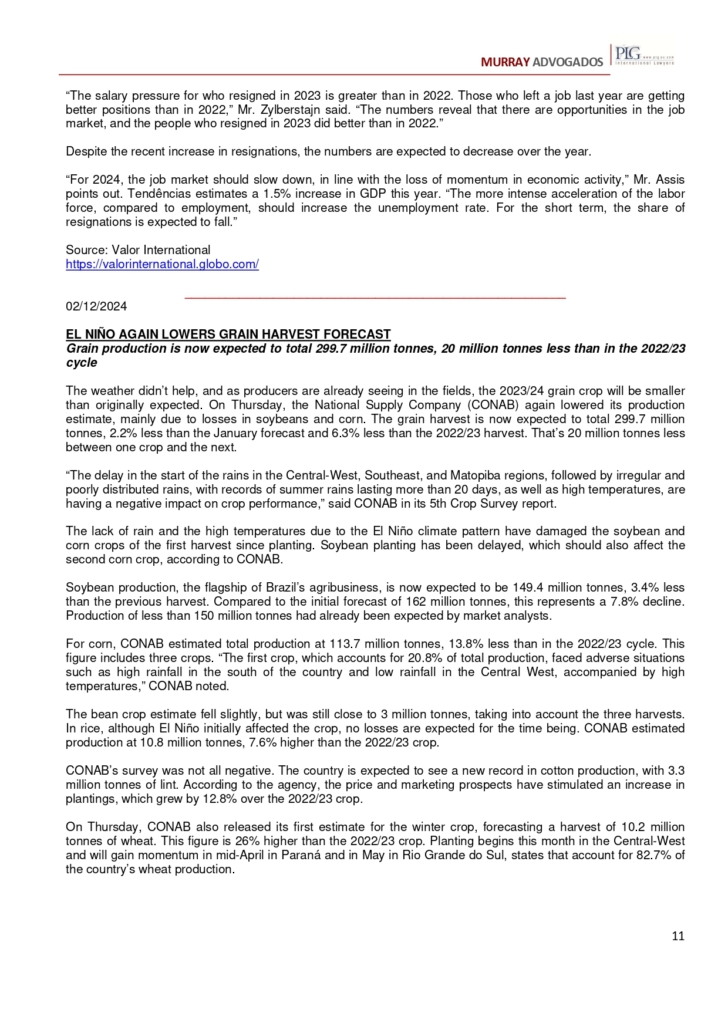
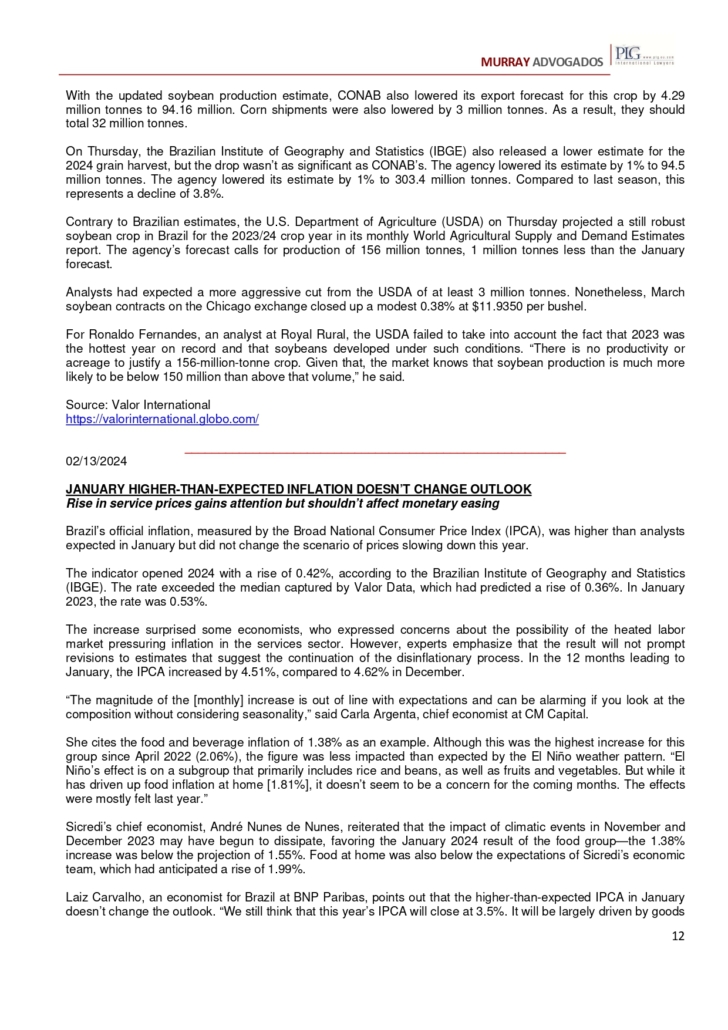
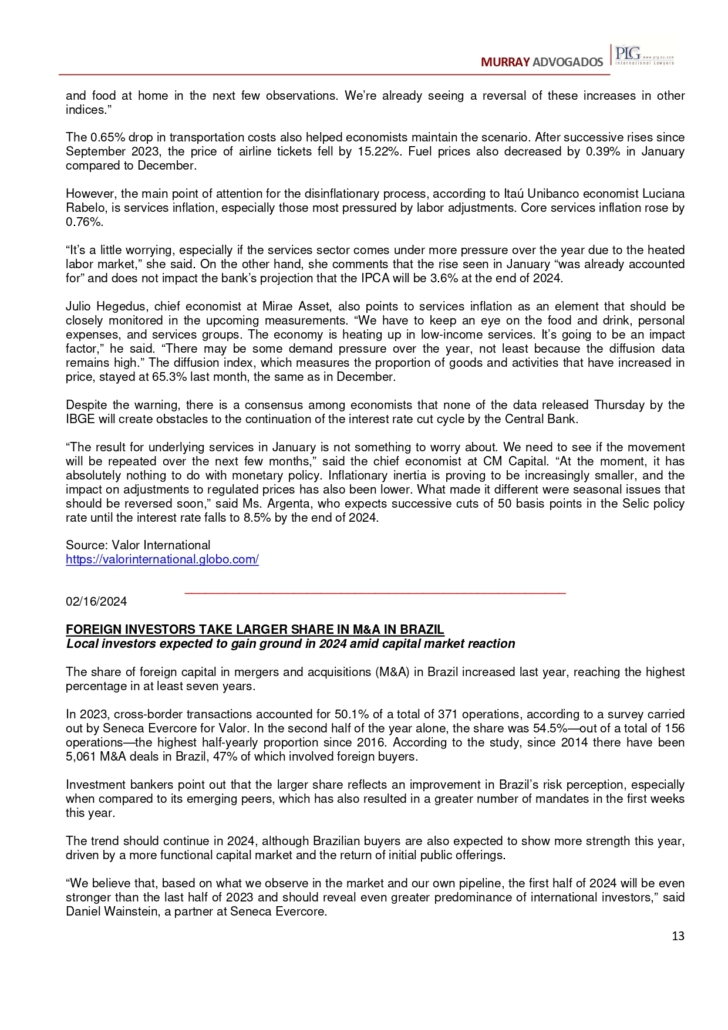


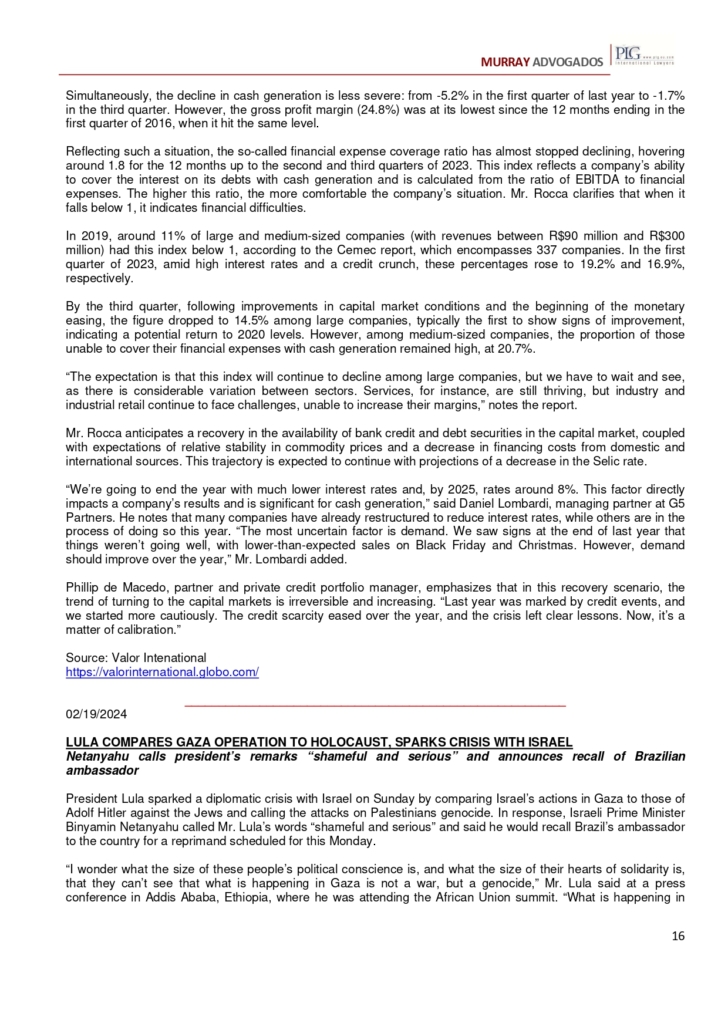
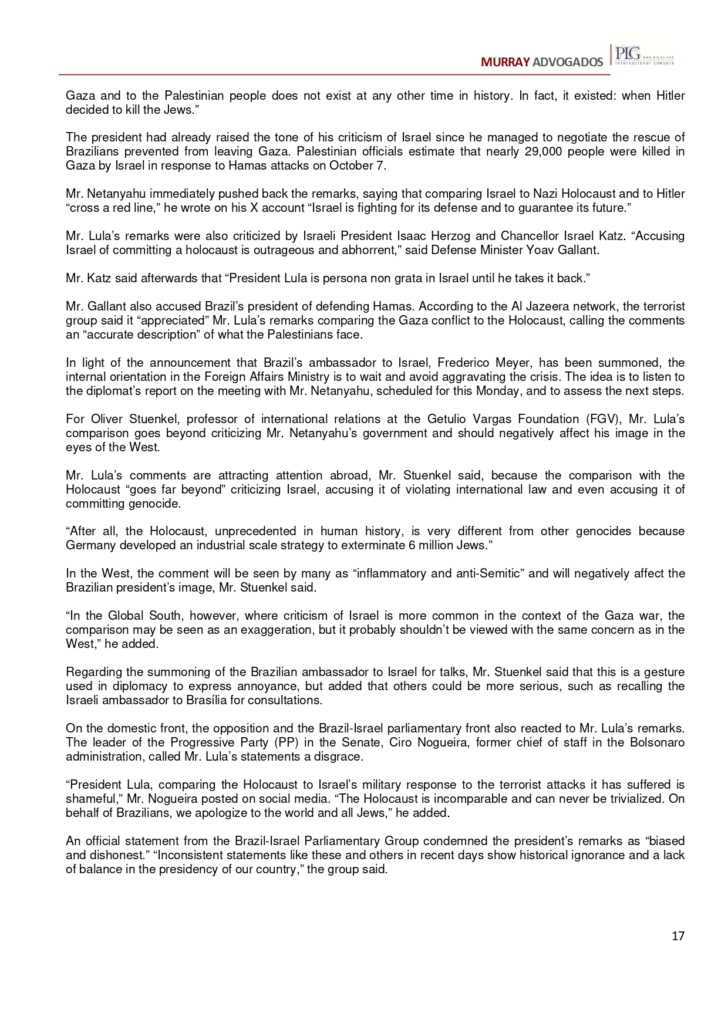
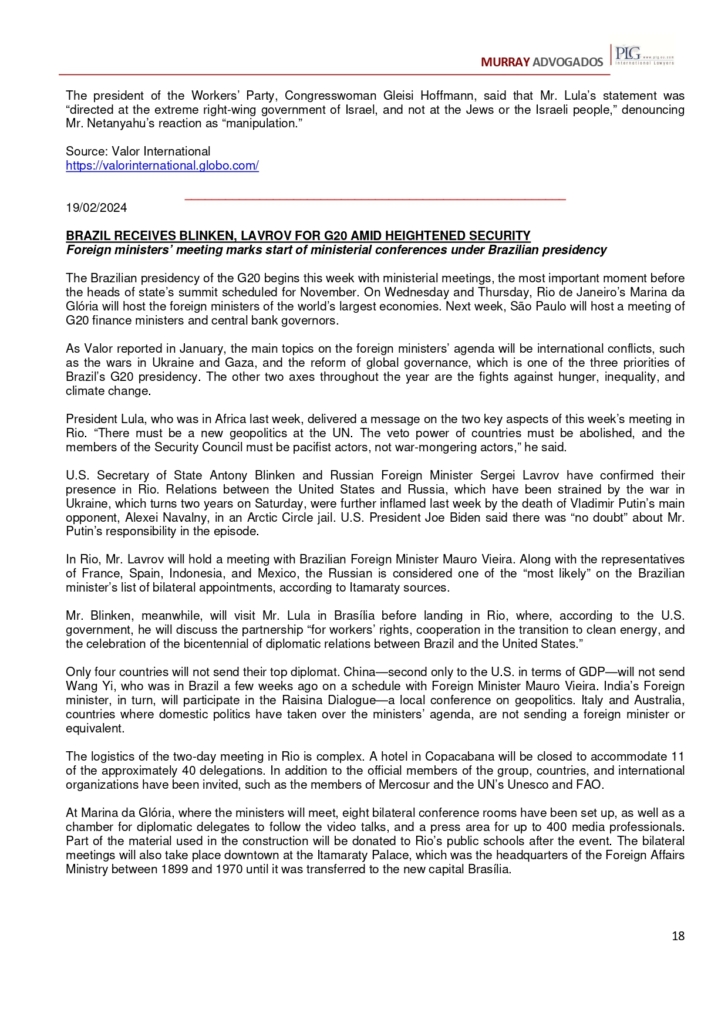
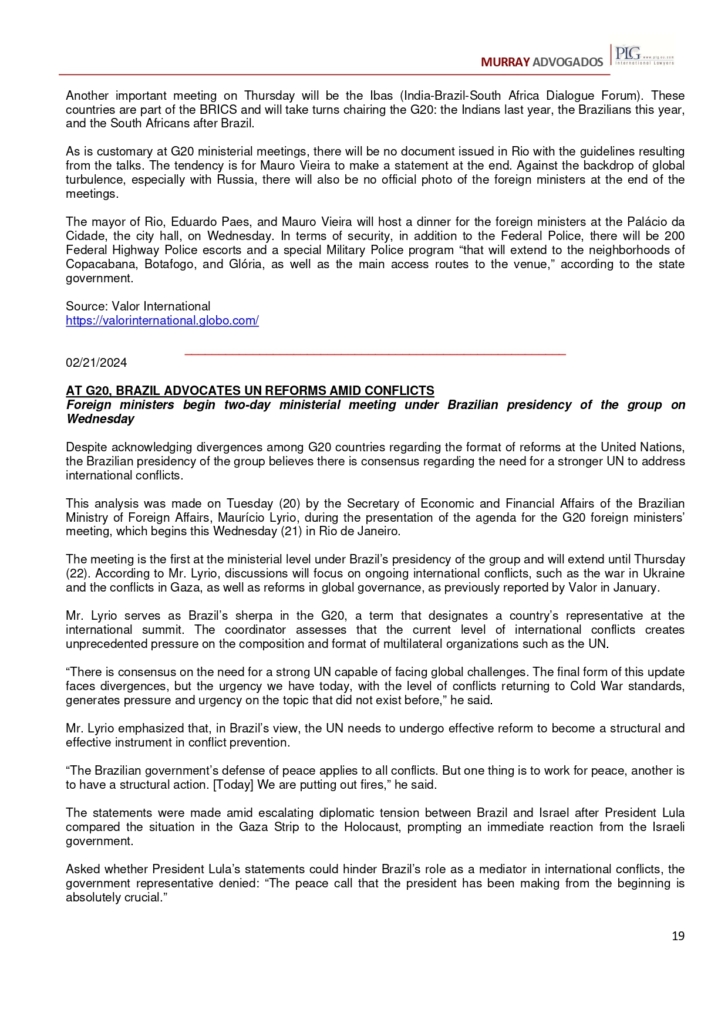
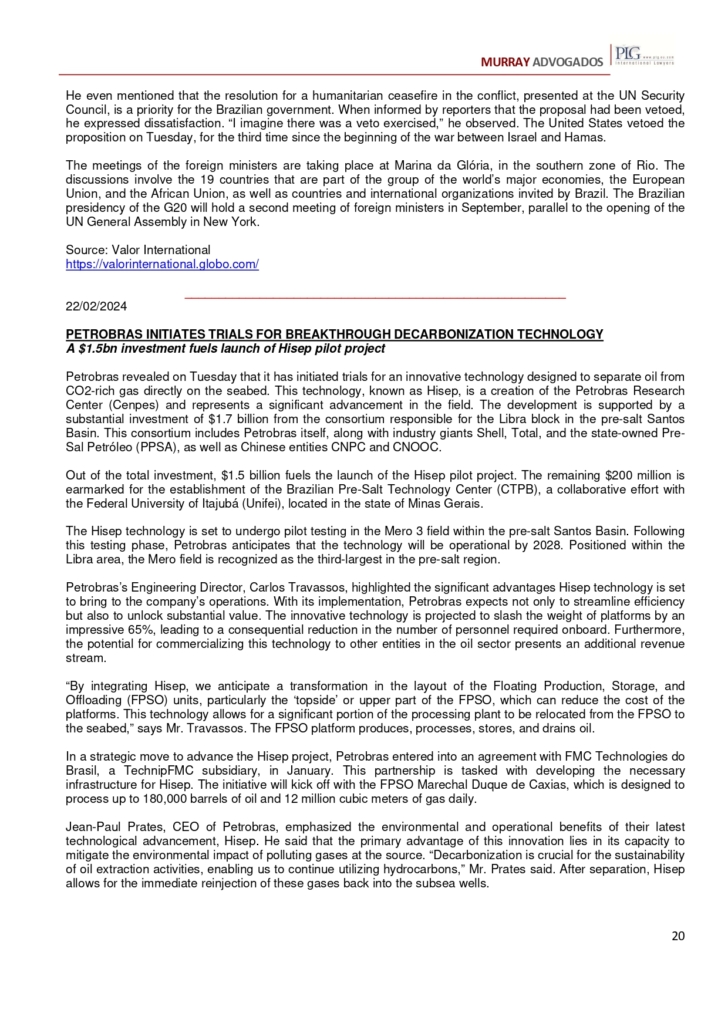
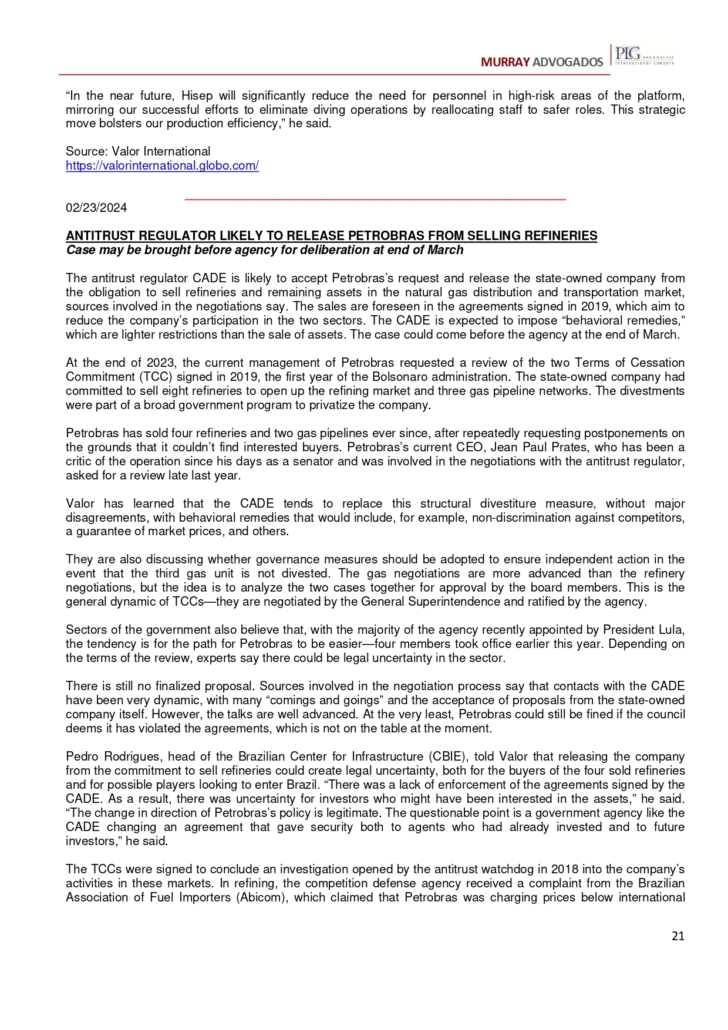


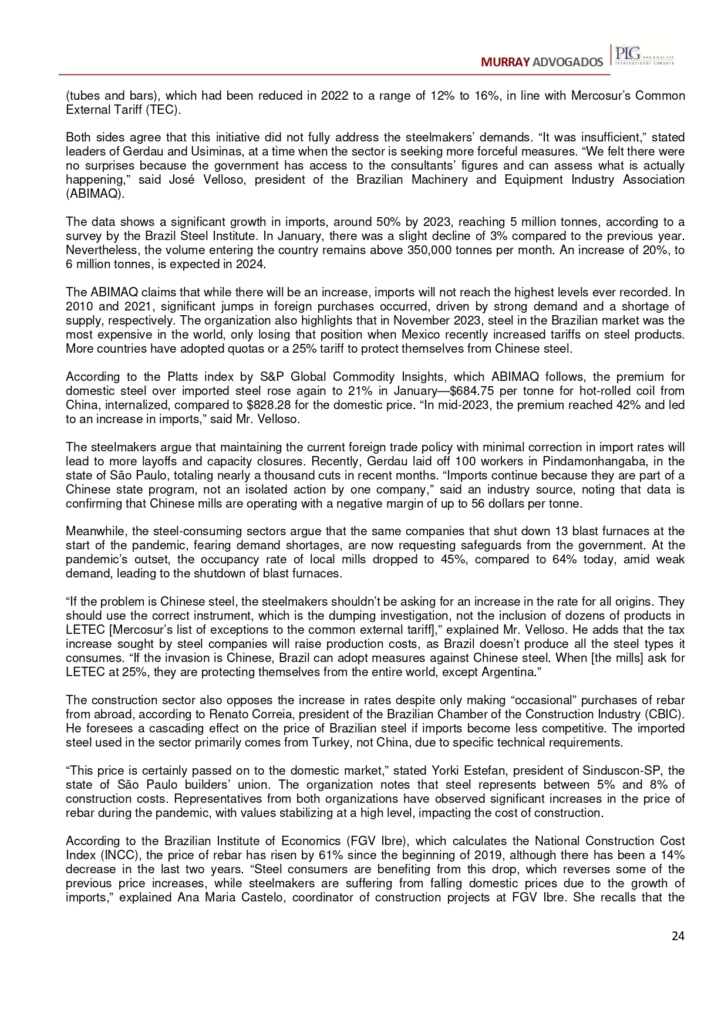
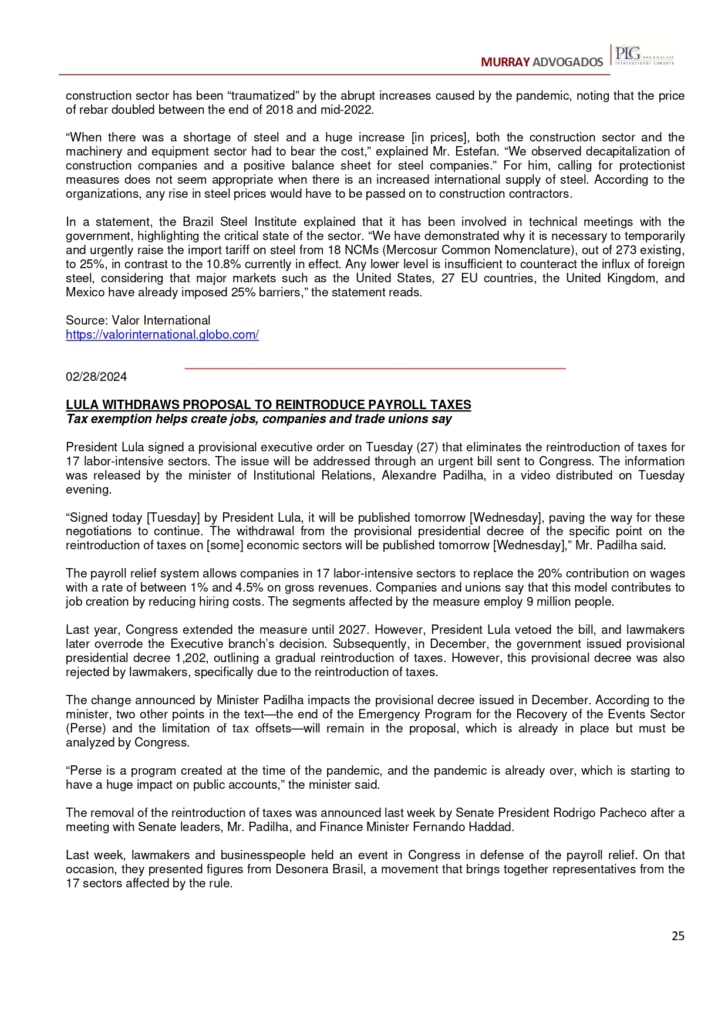
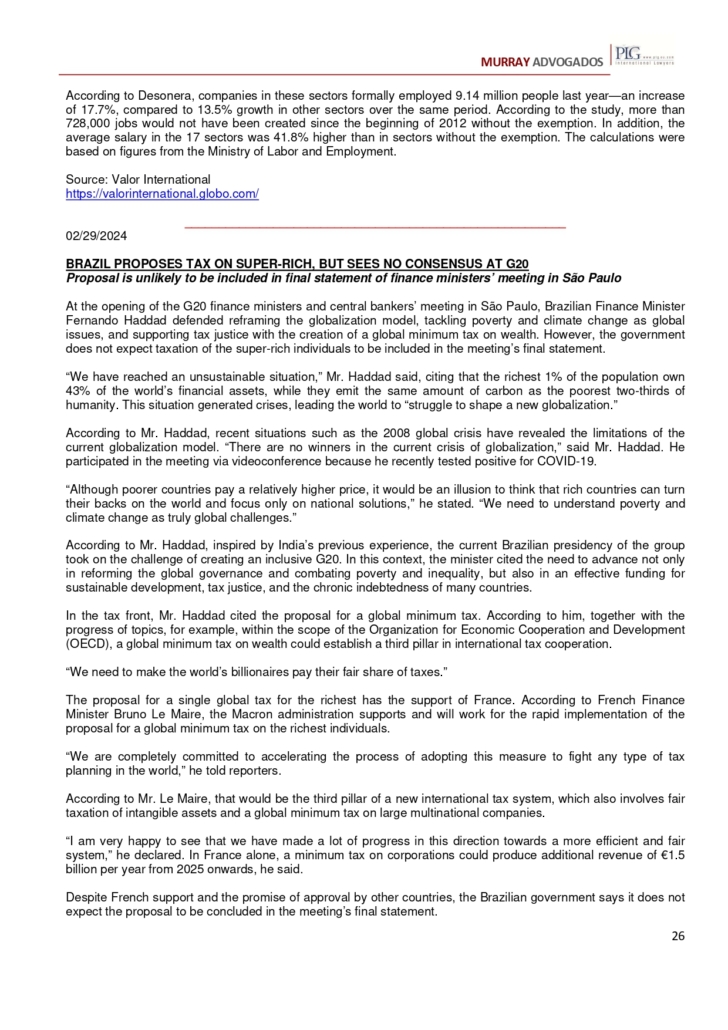
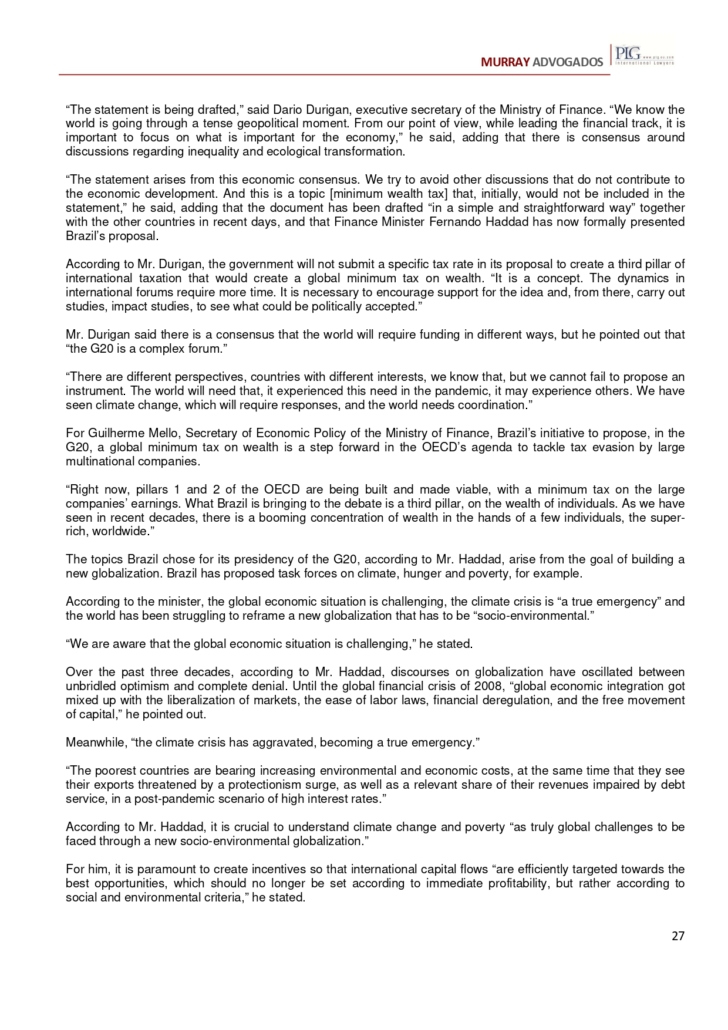
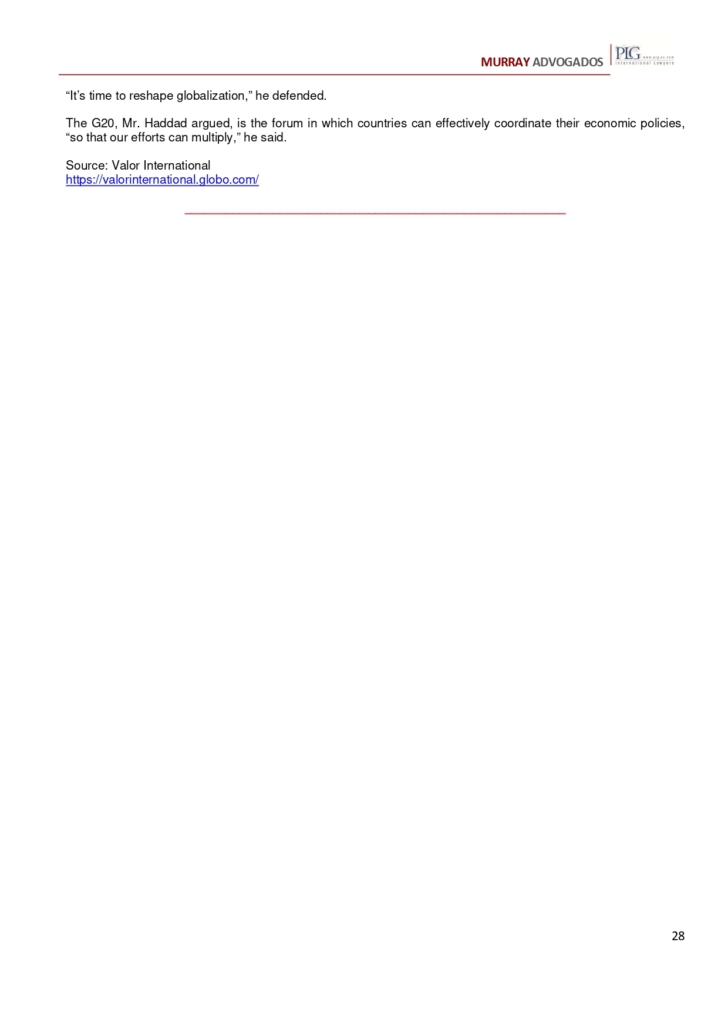
MURRAY ADVOGADOS




























02/29/2024
/i.s3.glbimg.com/v1/AUTH_37554604729d4b2f9f3eb9ad8a691345/internal_photos/bs/2024/G/S/ZNAYeVQJqka10RfA6RVA/280224solfacil027.jpg)
Kanastra’s Netto and Solfácil’s Tiret — Foto: Ana Paula Paiva/Valor
Solfácil, a company operating in the solar power industry, has raised R$600 million in Real Estate Receivables Certificates (CRIs) with the asset management company Kanastra. The objective is to enable the financing of photovoltaic projects for individuals and companies.
The issue, coordinated by Itaú BBA, is already the largest operation in Brazil’s self-generation sector, known as distributed generation (DG), a modality that mostly involves contracting solar power on rooftops or in solar farms.
CRIs are securities that generate a credit right for the investor, through a financing instrument designed to finance transactions in the real estate market. The financing was divided into series ranging from 11.51% per year to 20.95% per year. Guillaume Tiret, chief financial officer and co-founder of Solfácil, told Valor that the company will obtain a more attractive cost of capital, which will translate into lower interest rates for end users.
With the issuance of the green CRI, Solfácil has already raised more than R$1.3 billion in the last nine months. In July, the company raised R$418 million through a credit rights investment fund (FIDC). In November, the company raised R$250 million in a securitized financing line with Goldman Sachs, bringing the total to R$1 billion.
“It was important to combine our solar financing with the eligible backing of a CRI to enter a new debt market. It’s a bigger market than FIDCs. We can access individual investors and it’s a fixed-rate market,” said Mr. Tiret.
Kanastra co-founder Manuel Netto added that the company already has experience in different asset profiles, such as supply chain financing, and is now entering a modality with ESG appeal, real economy and a company with a credit history.
The operation links the buyer of the solar panel, who will replace the electricity bill with a debt with a predetermined maturity that will be repaid with funds in the capital market, said Mr. Netto. “The market understood that there was no risk of a credit crisis because of the cases of Americanas and Light. In addition, the policy interest rate continued its downward trend and inflation approached the target, which lowered the cost of money and allowed this type of issuance project to finance more operations.”
For Camila Ramos, president of Clean Energy Latin America (CELA), a consulting firm specializing in the renewable energy sector, CRIs are a popular tool among companies as an alternative to tax-exempt debentures. According to the executive, the funds raised are mainly used to help companies finance a large and widespread volume of consumers who have expensive electricity bills and are betting on the purchase of solar kits as an alternative.
In the case of Solfácil, the company has financed around 20,000 projects through other funds for customers who exchange their electricity bill for part of the financing, and is now transferring its portfolio of existing customers to this CRI. According to data from the National Electricity Agency (ANEEL), Brazil currently has 2.4 million consumer units (UC) equipped with photovoltaic systems. Each UC represents the home of a family, a commercial venue, or any other property served by micro or mini power plants.
Despite being a smaller form of power generation, the segment has increasingly attracted the attention of major players in the industry. The sector currently has more than 27 gigawatts of installed capacity in Brazil, and ABGD, the association that represents companies in the sector, predicts that the segment will reach 35 GW in Brazil by the end of 2024.
Major players include (re)Energisa, Comerc, Grupo Rezek Energia, Raízen, GDSun with BTG funds, among others. In 2023, the sector generated R$26.5 billion in investments. The big announcements were made by the French company GreenYellow, which invested R$330 million in the sector, and the Canadian company Brookfield, which entered the sector with an initial contribution of R$1.2 billion. Pátria Investimentos invested $120 million to launch the operations of a new power company dedicated to distributed generation solar projects.
Portugal’s EDP was even more aggressive, announcing an investment plan of R$13 billion in distributed generation, with the goal of installing an additional 4 GWp of solar projects by 2026. At the beginning of 2024, I Squared Capital bought 49% of the distributed generation company Órigo Energia, with an investment of R$2 billion.
What explains this race for the sun is that former President Jair Bolsonaro’s approval of the legal framework for distributed generation in 2022 created a sense of urgency to ensure that the tariff for using the distribution grid would be free until 2045.
*Por Robson Rodrigues — São Paulo
Source: Valor International
02/29/2024
/i.s3.glbimg.com/v1/AUTH_37554604729d4b2f9f3eb9ad8a691345/internal_photos/bs/2024/A/X/7rBySsQzyBYskEe9D94g/050711-20casino-2007.jpg)
Jean Charles Naouri — Foto: Leo Pinheiro/Valor
The French group Casino had to write off €1.85 billion in 2023 related to its investments in GPA, the operator of Pão de Açúcar.
This directly affected the French retailer’s €5.66 billion loss last year, the largest in the company’s history, approximately 1,700% higher than the loss in 2022.
Out of the €5.66 billion total, around €3.1 billion pertains to discontinued operations, including the losses with GPA. The remaining €2.5 billion are write-offs from the French retailer’s ongoing operations, the company informed the market.
The French are expected to withdraw from their investment in the Brazilian retailer, as they announced in June 2023, likely reducing their stake in the chain in stages, sources indicate. For that reason, they are required to account for a possible accounting loss in the recoverable value of the asset, termed “impairment.”
When the book value of an asset exceeds its recoverable value, the operation is devalued, leading to a calculated loss.
Companies must revalue intangible assets (such as brands and patents) annually, including goodwill paid on acquisitions due to the expectation of future profitability.
When the asset is no longer expected to generate returns, the business is considered impaired. The periods of sale or exit from investments are occasions when this adjustment can be significant.
On Wednesday, GPA’s shares closed with a significant 11.93% increase, the highest on the Ibovespa, heightening the pressure on investors in a short position. With Casino making the write-down, it underscores its commitment to exiting the asset—a move the market views positively for the business.
Of the €1.85 billion recognized as losses on GPA, €951 million was already accounted for in June 2023.
Losses were also recorded in continuing operations with the Colombian group Éxito, following the sale of 34% of Casino’s stake in the retailer to the Calleja group in 2023.
In that instance, an impairment charge of €841 million was recognized. Additionally, Casino’s large and superstore assets were devalued by €823 million.
Moreover, in the Franprix and Monoprix retail chains, based in France and controlled by Casino, there was a further write-down of €514 million.
Casino has been undergoing significant restructuring for years after its debt skyrocketed, leading its holding company to enter a form of court-supervised reorganization in 2019. Consequently, over the years, under creditor pressure, it has divested several billion euros worth of assets in Europe.
In the case of GPA, Casino is preparing for a probable halving of its stake in the retailer, currently at 40.9%, due to a primary public offering of shares that the French are unlikely to follow, resulting in significant dilution. This is expected to be the beginning of the divestment from the chain, according to people familiar with the matter. GPA announced an offering of R$1 billion in December.
This capitalization of GPA is still under consideration, and the intention is to proceed with it, Valor learned, after the fourth-quarter balance sheet was published on February 21. A source mentioned on Wednesday that, considering less volatility in the shares, the offer could be concluded between the end of March and April. Officially, the company has stated that studies for the operation have begun, but without specifying an exact date.
GPA’s current market capitalization is R$1.13 billion—about 20% of the group’s net equity at the end of 2023.
On the Paris Stock Exchange on Wednesday, Casino’s shares dropped sharply by 21.85% after the company announced that the projections made in November for the 2023-2028 period are no longer applicable. It also did not provide new estimates due to the process of change in process at the company.
Casino is in the midst of a transition of controlling shareholders, in a deal that has been in progress for at least a year.
A consortium led by Czech billionaire Daniel Kretinsky, who was already a shareholder in the group—with support from other investors, including the holding company Fimalac and the creditor Attestor—is expected to take control of the French company, significantly diluting Casino CEO Jean-Charles Naouri’s stake.
The agreement includes a €1.2 billion injection into the French group and the conversion of nearly €5 billion in debt into equity. The operations outlined in the plan are expected to be completed by March 27, the group stated on Monday.
The acceleration in the indebtedness of Casino’s companies over the last decade has led the group to seek debt renegotiation with creditors. According to the 2023 balance sheet, Casino ended the year with €6.2 billion in net debt, €1.7 billion more than the previous year. Cash and equivalents stood at €1 billion. Net sales decreased by 3.7% to €9 billion in 2023.
*Por Adriana Mattos — São Paulo
Source: Valor International
02/29/2024
/i.s3.glbimg.com/v1/AUTH_37554604729d4b2f9f3eb9ad8a691345/internal_photos/bs/2024/s/f/FaZnyqTMS99waGXEmAZg/53557967840-9ea6ed55c3-o.jpg)
Finance Minister Fernando Haddad participated in the meeting via videoconference because he recently tested positive for COVID-19 — Foto: Kelly Fersan/MF
At the opening of the G20 finance ministers and central bankers’ meeting in São Paulo, Brazilian Finance Minister Fernando Haddad defended reframing the globalization model, tackling poverty and climate change as global issues, and supporting tax justice with the creation of a global minimum tax on wealth. However, the government does not expect taxation of the super-rich individuals to be included in the meeting’s final statement.
“We have reached an unsustainable situation,” Mr. Haddad said, citing that the richest 1% of the population own 43% of the world’s financial assets, while they emit the same amount of carbon as the poorest two-thirds of humanity. This situation generated crises, leading the world to “struggle to shape a new globalization.”
According to Mr. Haddad, recent situations such as the 2008 global crisis have revealed the limitations of the current globalization model. “There are no winners in the current crisis of globalization,” said Mr. Haddad. He participated in the meeting via videoconference because he recently tested positive for COVID-19.
“Although poorer countries pay a relatively higher price, it would be an illusion to think that rich countries can turn their backs on the world and focus only on national solutions,” he stated. “We need to understand poverty and climate change as truly global challenges.”
According to Mr. Haddad, inspired by India’s previous experience, the current Brazilian presidency of the group took on the challenge of creating an inclusive G20. In this context, the minister cited the need to advance not only in reforming the global governance and combating poverty and inequality, but also in an effective funding for sustainable development, tax justice, and the chronic indebtedness of many countries.
In the tax front, Mr. Haddad cited the proposal for a global minimum tax. According to him, together with the progress of topics, for example, within the scope of the Organization for Economic Cooperation and Development (OECD), a global minimum tax on wealth could establish a third pillar in international tax cooperation.
“We need to make the world’s billionaires pay their fair share of taxes.”
The proposal for a single global tax for the richest has the support of France. According to French Finance Minister Bruno Le Maire, the Macron administration supports and will work for the rapid implementation of the proposal for a global minimum tax on the richest individuals.
“We are completely committed to accelerating the process of adopting this measure to fight any type of tax planning in the world,” he told reporters.
According to Mr. Le Maire, that would be the third pillar of a new international tax system, which also involves fair taxation of intangible assets and a global minimum tax on large multinational companies.
“I am very happy to see that we have made a lot of progress in this direction towards a more efficient and fair system,” he declared. In France alone, a minimum tax on corporations could produce additional revenue of €1.5 billion per year from 2025 onwards, he said.
Despite French support and the promise of approval by other countries, the Brazilian government says it does not expect the proposal to be concluded in the meeting’s final statement.
“The statement is being drafted,” said Dario Durigan, executive secretary of the Ministry of Finance. “We know the world is going through a tense geopolitical moment. From our point of view, while leading the financial track, it is important to focus on what is important for the economy,” he said, adding that there is consensus around discussions regarding inequality and ecological transformation.
“The statement arises from this economic consensus. We try to avoid other discussions that do not contribute to the economic development. And this is a topic [minimum wealth tax] that, initially, would not be included in the statement,” he said, adding that the document has been drafted “in a simple and straightforward way” together with the other countries in recent days, and that Finance Minister Fernando Haddad has now formally presented Brazil’s proposal.
According to Mr. Durigan, the government will not submit a specific tax rate in its proposal to create a third pillar of international taxation that would create a global minimum tax on wealth. “It is a concept. The dynamics in international forums require more time. It is necessary to encourage support for the idea and, from there, carry out studies, impact studies, to see what could be politically accepted.”
Mr. Durigan said there is a consensus that the world will require funding in different ways, but he pointed out that “the G20 is a complex forum.”
“There are different perspectives, countries with different interests, we know that, but we cannot fail to propose an instrument. The world will need that, it experienced this need in the pandemic, it may experience others. We have seen climate change, which will require responses, and the world needs coordination.”
For Guilherme Mello, Secretary of Economic Policy of the Ministry of Finance, Brazil’s initiative to propose, in the G20, a global minimum tax on wealth is a step forward in the OECD’s agenda to tackle tax evasion by large multinational companies.
“Right now, pillars 1 and 2 of the OECD are being built and made viable, with a minimum tax on the large companies’ earnings. What Brazil is bringing to the debate is a third pillar, on the wealth of individuals. As we have seen in recent decades, there is a booming concentration of wealth in the hands of a few individuals, the super-rich, worldwide.”
The topics Brazil chose for its presidency of the G20, according to Mr. Haddad, arise from the goal of building a new globalization. Brazil has proposed task forces on climate, hunger and poverty, for example.
According to the minister, the global economic situation is challenging, the climate crisis is “a true emergency” and the world has been struggling to reframe a new globalization that has to be “socio-environmental.”
“We are aware that the global economic situation is challenging,” he stated.
Over the past three decades, according to Mr. Haddad, discourses on globalization have oscillated between unbridled optimism and complete denial. Until the global financial crisis of 2008, “global economic integration got mixed up with the liberalization of markets, the ease of labor laws, financial deregulation, and the free movement of capital,” he pointed out.
Meanwhile, “the climate crisis has aggravated, becoming a true emergency.”
“The poorest countries are bearing increasing environmental and economic costs, at the same time that they see their exports threatened by a protectionism surge, as well as a relevant share of their revenues impaired by debt service, in a post-pandemic scenario of high interest rates.”
According to Mr. Haddad, it is crucial to understand climate change and poverty “as truly global challenges to be faced through a new socio-environmental globalization.”
For him, it is paramount to create incentives so that international capital flows “are efficiently targeted towards the best opportunities, which should no longer be set according to immediate profitability, but rather according to social and environmental criteria,” he stated.
“It’s time to reshape globalization,” he defended.
The G20, Mr. Haddad argued, is the forum in which countries can effectively coordinate their economic policies, “so that our efforts can multiply,” he said.
*Por Marcelo Osakabe, Anaïs Fernandes — São Paulo
Source: Valor International
02/28/2024
/i.s3.glbimg.com/v1/AUTH_37554604729d4b2f9f3eb9ad8a691345/internal_photos/bs/2024/Q/s/YMFKc0Sby7Qbq9ZntHVg/124a1473-3.jpg)
Alexandre Padilha — Foto: Fabio Rodrigues-Pozzebom/ Agência Brasil
President Lula signed a provisional executive order on Tuesday (27) that eliminates the reintroduction of taxes for 17 labor-intensive sectors. The issue will be addressed through an urgent bill sent to Congress. The information was released by the minister of Institutional Relations, Alexandre Padilha, in a video distributed on Tuesday evening.
“Signed today [Tuesday] by President Lula, it will be published tomorrow [Wednesday], paving the way for these negotiations to continue. The withdrawal from the provisional presidential decree of the specific point on the reintroduction of taxes on [some] economic sectors will be published tomorrow [Wednesday],” Mr. Padilha said.
The payroll relief system allows companies in 17 labor-intensive sectors to replace the 20% contribution on wages with a rate of between 1% and 4.5% on gross revenues. Companies and unions say that this model contributes to job creation by reducing hiring costs. The segments affected by the measure employ 9 million people.
Last year, Congress extended the measure until 2027. However, President Lula vetoed the bill, and lawmakers later overrode the Executive branch’s decision. Subsequently, in December, the government issued provisional presidential decree 1,202, outlining a gradual reintroduction of taxes. However, this provisional decree was also rejected by lawmakers, specifically due to the reintroduction of taxes.
The change announced by Minister Padilha impacts the provisional decree issued in December. According to the minister, two other points in the text—the end of the Emergency Program for the Recovery of the Events Sector (Perse) and the limitation of tax offsets—will remain in the proposal, which is already in place but must be analyzed by Congress.
“Perse is a program created at the time of the pandemic, and the pandemic is already over, which is starting to have a huge impact on public accounts,” the minister said.
The removal of the reintroduction of taxes was announced last week by Senate President Rodrigo Pacheco after a meeting with Senate leaders, Mr. Padilha, and Finance Minister Fernando Haddad.
Last week, lawmakers and businesspeople held an event in Congress in defense of the payroll relief. On that occasion, they presented figures from Desonera Brasil, a movement that brings together representatives from the 17 sectors affected by the rule.
According to Desonera, companies in these sectors formally employed 9.14 million people last year—an increase of 17.7%, compared to 13.5% growth in other sectors over the same period. According to the study, more than 728,000 jobs would not have been created since the beginning of 2012 without the exemption. In addition, the average salary in the 17 sectors was 41.8% higher than in sectors without the exemption. The calculations were based on figures from the Ministry of Labor and Employment.
*Por Estevão Taiar, Renan Truffi — Brasília
Source: Valor International
02/28/2024
/i.s3.glbimg.com/v1/AUTH_37554604729d4b2f9f3eb9ad8a691345/internal_photos/bs/2024/5/I/YQkweWS7yMJYtA9J97og/290523g5partners05.jpg)
Luis Otavio Leal — Foto: Celso Doni/Valor
Brazil’s mid-month inflation index IPCA-15, known as a reliable predictor for official inflation, indicated a 0.78% increase in prices in February. Despite the rise compared to January, when the index went up 0.31%, February brought a positive surprise, according to some economists, and was driven by education, a seasonal factor linked to the beginning of the school year.
The indicator showed a slowdown in important groups, including food and beverages, but concerns about service inflation and its possible impact on the monetary easing put in place by the Central Bank remain, economists say.
February’s result fell below the median of the 29 projections made by analysts from consultancies and financial institutions interviewed by Valor Data. They had expected a 0.81% increase for the month, with estimates ranging from 0.56% to 0.90%.
Released on Tuesday (27) by the Brazilian Institute of Geography and Statistics (IBGE), the IPCA-15 saw an increase of 4.49% in 12 months until February, compared to 4.47% until January, also in a 12-month period. The number is also below the median of Valor Data estimates, of 4.52%, with a range between 4.26% and 4.61%. The Brazilian Central Bank’s inflation target for 2024 is 3%, with a margin of 1.5 percentage points downwards or upwards.
Of the nine groups surveyed, five saw an acceleration between January and February. The main increase was in education, which accelerated from 0.39% in January to 5.07% in February, marking the start of the school year with increases in tuitions. The rise in education is seasonal and was expected; it may recur in March and then disappear, said Helena Veronese, chief economist at B. Side Investimentos.
Laiz Carvalho, Brazil economist at BNP Paribas, points out that, despite the increase in education, the number was not as high as most economists anticipated. Among the prices that helped curb inflation in February, the economist cites airline tickets, which fell 10.65% in February following a 15.24% drop in January, according to IBGE. Ms. Carvalho also cites a sharper than expected slowdown in food prices. “We expect this slowdown to continue in the next readings.” BNP Paribas estimates IPCA at 3.5% in 2024.
After rising 1.53% in January, food and beverage prices reduced the pace to a 0.97% increase in February. The group accounted for 0.2 percentage point of the increase in the IPCA-15 in the month. Within the group, food at home helped curb the reading.
Higher inflation rates were seen between January and February, also in household items, transportation, health and personal care, plus communications. In the latest group, the surprise came from pay TV, which rose 4.02% in February, compared to stability in January and an increase of 2.5% in February 2023. The telephone, internet, and pay TV combo rose 3.29% in February, compared to stability in January and an increase of 1.35% in February 2023. The price of those services usually change in the months when companies make adjustment to subscriptions.
Consequently, the prices of the communications group, which had decreased by 0.03% in January, surged by 1.67% in February. This increase contributed 0.08 percentage points to the February IPCA-15. Luis Otavio Leal, chief economist at G5 Partners, remarked, “The unexpected rise in pay TV prices and the cost of telephone, internet, and TV bundles, coupled with hikes in vehicular taxes [IPVA], gasoline, and school tuition, made the beginning of the year particularly inflationary.”
After four consecutive drops, the price of gasoline rose 0.84% in February. The increase, according to Mr. Leal, reflects the states’ partial reintroduction of the Tax on Circulation of Goods and Service (ICMS) levied on the fuel.
Among the elements worth greater attention in the February IPCA-15, Ms. Veronese cites the average of core inflation, which eliminates the most sensitive and volatile components from the indicator. This average accelerated to 0.57% in February from 0.33% in January. Furthermore, service prices rose 1.13%, coming from -0.11% in January.
Part of the increase in services is explained by school tuition, said Mr. Leal of G5 Partners. “But school tuition is no excuse for the numbers of underlying services, which went from 0.68% in January to 0.65% in January. Despite the slowdown, 0.65% is a very high rate and confirms the concerns expressed last week by [Central Bank President] Roberto Campos Neto about services. The IPCA-15 did not ease these concerns.”
The underlying services show that persistent prices are still high, even with the slowdown between January and February, said Luca Mercadante, economist at Rio Bravo Investimentos. The underlying services measure only considers the most structural part of services and excludes items such as training courses, communication, and tourism. “The reminder persists, despite the positive surprise of the indicator on the margin,” he states.
For Mr. Leal, the behavior of services prices could have an impact on the interest rate cut cycle, especially from June onwards. According to the economist, that could lead to smaller interest rates cuts, of 0.25 percentage points, in comparison to the 0.5pp recent cuts. Mr. Leal projects the Selic policy interest rate at 9% per year at the end of the year.
More optimistic regarding the monetary policy, André Cordeiro, an economist at Banco Inter, points out that, although the IPCA-15 core average accelerated to 0.57%, the number was in line with expectations for February. He agrees that the main point of attention is the behavior of prices for underlying services.
“However, due to the seasonality at the beginning of the year, it is early to make any conclusions about a change in the dynamics. The scenario should not change the COPOM’s [Monetary Policy Committee] plan, which should maintain the 50-basis-point cuts in the Selic rate in the next meetings, and most of uncertainties should be about the final rate, a discussion that could gain ground only in the second half of the year,” said Mr. Cordeiro. Banco Inter projects the Selic at 8.5% at the end of the year.
Ms. Carvalho, from BNP Paribas, notes that underlying services should remain close to the current level until April’s IPCA-15, but, in her opinion, there is room for the Selic to reach 8.5% per year by the end of the year.
*Por Lucianne Carneiro, Marta Watanabe — Rio de Janeiro and São Paulo
Source: Valor International
02/28/2024
/i.s3.glbimg.com/v1/AUTH_37554604729d4b2f9f3eb9ad8a691345/internal_photos/bs/2024/9/0/A1bkZmTeuhGhkMePSf1A/040923-carloshiginofotowendersonaraujo-9.jpg)
Carlos Higino — Foto: Wenderson Araujo/Valor
Taxpayers lost disputes totaling R$109 billion at the Administrative Council of Tax Appeals (CARF) in 2023, more than triple the volume recorded in the previous year of R$30 billion. It is the highest level since 2019, when the federal government won lawsuits worth R$137.1 billion, according to data obtained exclusively by Valor.
After expanding cases in 2023, the appeals body—Finance Minister Fernando Haddad’s main bet to reach the zero primary deficit target in 2024—wants to judge 50% more this year than planned, with the end of the Federal Revenue Service auditors’ strike and the return of the possibility of a tie-breaking vote in favor of the federal government: the new goal is to analyze R$870 billion in tax credits this year, compared to R$580 billion forecast in the budget.
In the first year of the Lula administration, the CARF judged tax disputes totaling R$278 billion, compared to R$138 billion in the last year of the Bolsonaro administration. The figure rose in 2023 even in the midst of the Federal Revenue Service strike and the uncertainty surrounding the return of the casting vote, which resulted in billion-reais cases being withdrawn from the bulk. Thus, under Mr. Haddad’s watch, decisions favorable to the federal government represented 39% of the total, compared to 22% in 2022.
In one of his first acts as Finance minister, Mr. Haddad appointed a new president for the CARF and, in the first half of his term, sent a bill to Congress for the return of the casting vote (the tie-breaker vote by the president of the CARF panels, who is always a tax auditor). When he sent the federal budget to Congress last year, the return of the casting vote was the most important measure in terms of revenue in the list of projects in search of a zero deficit—the bill was sanctioned at the end of September.
As the CARF analyzes the collection of taxes in the last administrative instance, the amount upheld from a tax assessment does not necessarily enter the federal coffers immediately, as the taxpayer can appeal to the courts. With the CARF trials alone, the federal government expects to raise R$54 billion this year. Historically, 10% of the total amount judged by the agency goes into the federal government’s coffers.
In an interview with Valor, Carlos Higino Ribeiro de Alencar, president of the Revenue Service’s appeals body, explained that, with the new target, the government is likely to collect the R$54 billion it wanted—with the increase in the target, in theory, up to R$87 billion could enter the federal government’s coffers. The intention, he explained, is to continue giving priority to the trial of higher-value cases.
Now, however, there is a new peculiarity: in the case of a loss by a tie-breaking vote, the taxpayer can be free of interest and fines as long as they settle the debt with the Federal Revenue Service within 90 days. At the same time as the amount paid should be lower with the exclusion of charges, the expectation is that more taxpayers will opt for payment.
In addition to the end of the Federal Revenue Service strike, three other factors could help the CARF reach the desired volume of trials: this year, the body will have 24 new board members (204 compared to 180 in 2023), it will hold extra sessions every month and, in June, it intends to launch a virtual plenary session along the lines of the Federal Supreme Court (STF), which will allow virtual trials to be held involving tax credits of up to R$60 million.
“The main problems are over. Now we have to reorganize the house and continue our work,” said Mr. Higino. With all the effort that the agency will make, he commented, there should be no difficulty in meeting the trial targets and, consequently, increasing the federal government’s revenue. “With all the turmoil, we judged everything this last year. That’s why I think we’re going to judge [what was intended] this year with ease.”
For March, for example, the CARF has already called two extra sessions per section. The president explained that there are talks with the Federal Revenue Service union about holding additional trials to compensate for the auditors’ strike. The idea is to convene extra sessions every month until the end of the year.
In the budget proposal, the federal government still plans to receive R$43 billion through tax transactions. The fully functioning CARF, said Mr. Higino, will also help with this goal since the trial schedule can prioritize theses that can be negotiated.
Alexandre Andrade, director of the Independent Fiscal Institution (IFI), believes that the increase in the number of trials could generate positive surprises for the federal government’s revenue. He pondered, however, that these are unpredictable revenues since taxpayers can always turn to the courts.
“With the return of the casting vote, an instrument that had been changed in 2020, the potential revenue for the federal government is relatively high. The only caveat I have is that the CARF represents an administrative instance, and taxpayers who have unfavorable decisions within the scope of this council can appeal to the courts,” he said.
According to Caio Quintella, a former CARF advisor and head of Nader Quintella Consultoria, even though the Finance minister’s statements indicate an effort to increase tax collection in litigation, the CARF remains a technical body with a duty to give reasons for its decisions.
For the tax expert, the increase in rulings against taxpayers is justified by two elements: the reintroduction of the casting vote and the inclusion on the schedule of their biggest cases. “Even though the number of trials was reduced, the economic impact was enormous.”
According to Bianca Rothschild, a lawyer at Mayer Brown, the first 2023 schedule already included billion-reais cases with “tie-breaking” topics, such as goodwill, profits abroad, and the 30% tax rate. The February schedule discussed cases worth R$11 billion, she added, and there were many requests to withdraw cases because of the new tie-breaker rule.
The difference now for the taxpayer, given the tie, is the benefits for making the payment, the lawyer points out. “Perhaps the 2024 approach to the settlement of cases will be a little different, with taxpayers opting to use the benefits of the transaction,” she said.
For Mírian Lavocat, a partner at Lavocat Advogados, “speeding up the internal workings of the court is commendable, but improving internal procedures does not mean ruling in favor of the federal government for the purpose of collection. To rule without the purpose of achieving tax justice is to turn the centenary court into a mere court of referendum on assessments by the Federal Revenue Service, which taxpayers cannot accept.”
*Por Guilherme Pimenta, Beatriz Olivon — Brasília
Source: Valor International
02/26/2024
/i.s3.glbimg.com/v1/AUTH_37554604729d4b2f9f3eb9ad8a691345/internal_photos/bs/2024/w/i/p4pyUVQqWG8UIMf3Ypmw/200318bndes84.jpg)
José Velloso
The tug-of-war between Brazil-based steelmakers and the steel-consuming sectors, which became personal between the end of 2023 and the beginning of this year, has returned to the sectoral arena, but with no less intensity. On one side, the mills are pushing to raise the import tax rate to 25% and are moving to have China investigated for “dumping” steel exports into the country. On the other side, industries led by the machinery and equipment sector accuse the steel mills of distorting figures to create a scenario worse than reality and call for the debate to remain “technical.”
At the center of this dispute, the federal government has implemented a few measures, which have not satisfied the mills and have been welcomed by the opposition. Recently, the Executive Management Committee of the Chamber of Foreign Trade (Gecex-Camex) announced the reinstatement of import tariffs on five steel products (tubes and bars), which had been reduced in 2022 to a range of 12% to 16%, in line with Mercosur’s Common External Tariff (TEC).
Both sides agree that this initiative did not fully address the steelmakers’ demands. “It was insufficient,” stated leaders of Gerdau and Usiminas, at a time when the sector is seeking more forceful measures. “We felt there were no surprises because the government has access to the consultants’ figures and can assess what is actually happening,” said José Velloso, president of the Brazilian Machinery and Equipment Industry Association (ABIMAQ).
The data shows a significant growth in imports, around 50% by 2023, reaching 5 million tonnes, according to a survey by the Brazil Steel Institute. In January, there was a slight decline of 3% compared to the previous year. Nevertheless, the volume entering the country remains above 350,000 tonnes per month. An increase of 20%, to 6 million tonnes, is expected in 2024.
The ABIMAQ claims that while there will be an increase, imports will not reach the highest levels ever recorded. In 2010 and 2021, significant jumps in foreign purchases occurred, driven by strong demand and a shortage of supply, respectively. The organization also highlights that in November 2023, steel in the Brazilian market was the most expensive in the world, only losing that position when Mexico recently increased tariffs on steel products. More countries have adopted quotas or a 25% tariff to protect themselves from Chinese steel.
According to the Platts index by S&P Global Commodity Insights, which ABIMAQ follows, the premium for domestic steel over imported steel rose again to 21% in January—$684.75 per tonne for hot-rolled coil from China, internalized, compared to $828.28 for the domestic price. “In mid-2023, the premium reached 42% and led to an increase in imports,” said Mr. Velloso.
The steelmakers argue that maintaining the current foreign trade policy with minimal correction in import rates will lead to more layoffs and capacity closures. Recently, Gerdau laid off 100 workers in Pindamonhangaba, in the state of São Paulo, totaling nearly a thousand cuts in recent months. “Imports continue because they are part of a Chinese state program, not an isolated action by one company,” said an industry source, noting that data is confirming that Chinese mills are operating with a negative margin of up to 56 dollars per tonne.
Meanwhile, the steel-consuming sectors argue that the same companies that shut down 13 blast furnaces at the start of the pandemic, fearing demand shortages, are now requesting safeguards from the government. At the pandemic’s outset, the occupancy rate of local mills dropped to 45%, compared to 64% today, amid weak demand, leading to the shutdown of blast furnaces.
“If the problem is Chinese steel, the steelmakers shouldn’t be asking for an increase in the rate for all origins. They should use the correct instrument, which is the dumping investigation, not the inclusion of dozens of products in LETEC [Mercosur’s list of exceptions to the common external tariff],” explained Mr. Velloso. He adds that the tax increase sought by steel companies will raise production costs, as Brazil doesn’t produce all the steel types it consumes. “If the invasion is Chinese, Brazil can adopt measures against Chinese steel. When [the mills] ask for LETEC at 25%, they are protecting themselves from the entire world, except Argentina.”
The construction sector also opposes the increase in rates despite only making “occasional” purchases of rebar from abroad, according to Renato Correia, president of the Brazilian Chamber of the Construction Industry (CBIC). He foresees a cascading effect on the price of Brazilian steel if imports become less competitive. The imported steel used in the sector primarily comes from Turkey, not China, due to specific technical requirements.
“This price is certainly passed on to the domestic market,” stated Yorki Estefan, president of Sinduscon-SP, the state of São Paulo builders’ union. The organization notes that steel represents between 5% and 8% of construction costs. Representatives from both organizations have observed significant increases in the price of rebar during the pandemic, with values stabilizing at a high level, impacting the cost of construction.
According to the Brazilian Institute of Economics (FGV Ibre), which calculates the National Construction Cost Index (INCC), the price of rebar has risen by 61% since the beginning of 2019, although there has been a 14% decrease in the last two years. “Steel consumers are benefiting from this drop, which reverses some of the previous price increases, while steelmakers are suffering from falling domestic prices due to the growth of imports,” explained Ana Maria Castelo, coordinator of construction projects at FGV Ibre. She recalls that the construction sector has been “traumatized” by the abrupt increases caused by the pandemic, noting that the price of rebar doubled between the end of 2018 and mid-2022.
“When there was a shortage of steel and a huge increase [in prices], both the construction sector and the machinery and equipment sector had to bear the cost,” explained Mr. Estefan. “We observed decapitalization of construction companies and a positive balance sheet for steel companies.” For him, calling for protectionist measures does not seem appropriate when there is an increased international supply of steel. According to the organizations, any rise in steel prices would have to be passed on to construction contractors.
In a statement, the Brazil Steel Institute explained that it has been involved in technical meetings with the government, highlighting the critical state of the sector. “We have demonstrated why it is necessary to temporarily and urgently raise the import tariff on steel from 18 NCMs (Mercosur Common Nomenclature), out of 273 existing, to 25%, in contrast to the 10.8% currently in effect. Any lower level is insufficient to counteract the influx of foreign steel, considering that major markets such as the United States, 27 EU countries, the United Kingdom, and Mexico have already imposed 25% barriers,” the statement reads.
*Por Stella Fontes, Ana Luiza Tieghi — São Paulo
Source: Valor International
02/26/2024
/i.s3.glbimg.com/v1/AUTH_37554604729d4b2f9f3eb9ad8a691345/internal_photos/bs/2024/5/I/rXgS25TgWUVTcoatO13g/230224renatootranto015.jpg)
Renato Otranto — Foto: Gabriel Reis/Valor
In the wake of the rally in tax-exempt debentures caused by the National Monetary Council’s restrictions on the issuance of real estate and agribusiness credit certificates and bills (CRIs, CRAs, LCIs, LCAs, and LIGs), another race has begun. To take advantage of the favorable window, with high demand and low rates, companies are bringing forward their funding, and there are already cases of companies that were going to launch ordinary debentures, for example, and have switched to incentivized debentures. In just the first 20 days of February, Renato Otranto, head of structuring at Daycoval Bank, calculates that the volume of operations, including both types of securities, has already surpassed the R$20.7 billion of January, periods that are usually seasonally weaker, and predicts that the month could close with R$30 billion in issues.
Compared to 2023, the increase is even more significant since, in the first days of the year, the market was in the throes of the Americanas debacle—the Brazilian retailer that filed for court-supervised reorganization in 2023. January 2023 still saw transactions totaling R$26.6 billion, but in February, the volume was restricted to R$16 billion. “ Investors are buying what they see in front of them in the expectation that the spreads [the difference between the rates paid for the bonds and the yields on equivalent National Treasury Notes Series B (NTN-Bs), which are the benchmark in the incentivized market] will fall further,” said Mr. Otranto.
He recounts the case of a frequent issuer who, three weeks ago, was formatting an ordinary debenture operation. Now, he says, he’s structuring it via Law 12,431, which created incentivized debentures. “Those who really need it are moving. Those who don’t have an emergency situation are assessing whether to go further.”
Two situations in recent days have been cited by asset managers as representative of the moment. One involves PetroRio, which has just issued R$2 billion in debentures in two series, of five and ten years, with rates of 11.1% and IPCA (Brazil’s primary measure of inflation) plus 6.5%, respectively. “The company didn’t need money now; it has a large cash position, it was a more opportunistic operation,” said Leonardo Ono, private credit manager at Legacy Capital. The other one concerns Aegea Saneamento e Participações, whose affiliates Águas do Rio 1 and 4 are about to issue R$3.4 billion in two series (10 and 18 years).
Ricardo Ara, co-manager of Legacy, said that after the company’s successful R$5.5 billion fundraising in August 2023—which caused a furor after it was revealed that almost R$1 billion had gone to the coordinating banks’ commission, a level rarely seen—it was uncertain whether there would be demand for a new issue. To guarantee the funds, the Brazilian Development Bank (BNDES) had secured a loan for the company. “But with strong demand for incentivized debentures, Aegea preferred to go to the market.” Market sources, however, say that this time, Aegea has renegotiated the commission with the banks to lower levels.
Cemig is on the roadshow for a R$2 billion issue in two series, one at the Interbank Certificate of Deposit (CDI) rate plus 1.22% (ordinary, five years) and the other at the NTN-B plus 0.45% (incentivized, 10 years). According to Mr. Otranto, public companies with the highest credit rating (“AAA”) were issuing at 0.5% above the NTN-B before the rally. There is also CCR— Brazilian infrastructure, transportation, and services concession company, one of the country’s main highway management companies—, which will raise R$1.25 billion through 18-year notes paying NTN-B plus 1.5%; and Águas do Sertão (R$1.1 billion through 19-year notes paying NTN-B plus 2.65%).
Despite being in the infrastructure sector, Sabesp has announced a R$2.5 billion offering in ordinary debentures, which are experiencing high demand, notes Marcos Garcia, superintendent of capital markets at Banco BV. However, the market’s primary focus remains on incentivized debentures. Mr. Garcia notes that the spread on ordinary debentures has decreased by 30 to 40 basis points for AAA-rated securities.
“The market has been shaken up. The high demand for tax-exempt corporate debt and from institutional investors has piqued the interest of companies,” said Mr. Garcia. According to him, it started to make sense for issuers who were waiting for a favorable window or for the new regulations on infrastructure debentures in January. “Demand for the obvious names has increased. The impact on incentivized and simple debentures was immediate,” said Thiago Lobato, head of capital markets at Inter DTVM.
At the end of January, the Autopista Planalto Sul concessionaire, a part of the Arteris group, issued R$650 million in debentures in two series, one incentivized and the other ordinary, with terms of seven and four years, respectively. The offer, therefore, hit the market before the rally that compressed spreads by between 0.3 and 0.8 percentage points and came out at IPCA plus 6.88% per year and CDI plus 2.55%, respectively. Demand for the CDI series was 1.5 times the value of the issue and for IPCA, 1.8 times, according to Mr. Otranto.
Águas do Sertão’s offering had also already been priced and, according to an asset manager interviewed by Valor, with the high demand, the acceptance of offerings was discretionary, which is unusual in the market. “The coordinator gave preference to requests from partner institutions,” the source commented. Additionally, with the rush for the papers, in the very first days of trading, the spread on the debenture fell from 265 basis points to 190.
Reports among asset managers also indicate that the coordinating banks are increasing the amount they absorb. In this way, they guarantee gains in the secondary market, which is also very active. “Retail banks are able to stock up on paper and take advantage of the rate,” Mr. Otranto explained. The treasuries of these institutions are already recording gains on paper they had placed in their portfolios, especially between October and December, when there wasn’t enough demand for operations after successive large offers, recalls Mr. Ono from Legacy. “The big banks are aware that this is a sustained demand.”
Felipe Wilberg, head of fixed income and structured products at Itaú BBA, notes that a significant number of incentive bonds are entering the market. However, due to the scarcity of bills and credit certificates, individual demand will also be high. “On the other hand, the institutional debenture market, which is euphoric because of incoming money, faces a smaller supply and a shortage of bonds, compressing spreads. Additionally, banks and funds are showing an appetite for these allocations in the absence of many new bonds. There will come the point when banks don’t buy any more if the rate is too low, and then the market will start to balance out.”
Data from the Brazilian Association of Financial and Capital Market Entities (ANBIMA) indicates that incentivized issues totaled R$14.2 billion up to July and surged from August to December, reaching R$53.7 billion. In contrast, ordinary issues totaled R$76.5 billion and R$92.1 billion, respectively. In October, transactions with tax-exempt papers (R$16.7 billion) exceeded those with ordinary securities (R$12.6 billion) for the first time in the year, with intermediaries and other participants subscribing to 59%. In November, they accounted for 41.2%, and in December, 65.6%.
The impact of the National Monetary Council’s (CMN) restrictions may already be evident this month. According to the Securities and Exchange Commission of Brazil (CVM), in January, there were 12 registered offerings of agribusiness receivables certificates (CRA) totaling R$2.2 billion, and in February, up to last Thursday (22), there were 10, totaling R$1.1 billion, indicating a dominance of smaller projects confined to the sector. For real estate receivables certificates (CRIs), from 43 offerings last month totaling R$3.6 billion, the volume decreased to 22 for a total of R$2.1 billion.
Mr. Garcia, from BV, explains that before the CMN’s restrictions on February 2, two factors had already been influencing the market, albeit not as acutely: the taxation of exclusive/restricted closed funds, which will start paying quotas this year, but, in the third quarter of 2023, when discussions in Congress began to advance, stopped receiving new money; and the remodeling of infrastructure debentures, whose tax incentive will shift to the issuer, potentially diverting resources from the incentivized ones.
Eduardo Correa, vice president of solutions at Ártica, remarks that at this stage, frequent issuers are more common, as they can quickly adapt. In the sector where Ártica primarily operates, medium-sized companies, programs have accelerated, and in the coming weeks, the company plans to bring four offers to market totaling R$200 million. Mr. Lobato, from Inter DTVM, mentions that the institution is revising the rates of operations already in the pipeline and anticipates that newcomers or less frequent issuers will benefit in a subsequent phase.
Mr. Wilberg, from Itaú BBA, believes that this rally is unhealthy. “We’re cautiously optimistic about individual behavior but a bit concerned about the euphoria, which is not beneficial. A balanced market is preferable.”
*Por Liane Thedim — Rio de Janeiro
Source: Valor International
02/26/2024
/i.s3.glbimg.com/v1/AUTH_37554604729d4b2f9f3eb9ad8a691345/internal_photos/bs/2024/k/w/hgWxcTQ7SWLeAoWnoP9w/eduardo-gomes-edilson-rodrigues-agencia-senado.png)
Senator Eduardo Gomes — Foto: Edilson Rodrigues/Agência Senado
Pointed out by Senate President Rodrigo Pacheco as a priority for the first half of the year, the bill authored by him that regulates artificial intelligence is expected to advance soon in the Upper House. The rapporteur of the matter, Eduardo Gomes, promises to deliver the report for voting in April. From there, lawmakers’ assessment is that the challenges of the text will only be beginning, and the conclusion of the analysis in Congress may be postponed until after the municipal elections to be held in October.
The regulation was advocated at the beginning of the year not only by Senator Pacheco but also by Chamber of Deputies Speaker Arthur Lira and the president of the Superior Electoral Court, Alexandre de Moraes, who urged Congress to act, claiming there are risks to the elections.
Eduardo Gomes said that it is not possible to improvise in the face of a topic that is still unknown to many. For him, it will be up to the electoral court and the regional courts to regulate the 2024 election based on the current legislation. “Voting before the elections doesn’t make sense. Maybe it makes sense to solve minor clashes, but it won’t solve the important issue of a safe law. What defines the time is the security to do it,” he said during an event last week.
To Valor, Mr. Gomes emphasized that other countries have been cautious about the topic to preserve their innovation capacity. “The text will undergo several changes. We have to define where Brazil will be, whether as a consumer or formulator of AI policies. Speed is needed, but not in a way that makes legislation inefficient. The intention is for everything to be resolved in the second semester, until COP-29 [in November],” he said.
The feeling is shared by other lawmakers. Senator Nelsinho Trad said that it is necessary to respect “the rapporteur’s time” due to the complexity of the issue. “The debate can be exercised and move forward in parallel,” he said.
There are more than 50 bills to regulate AI in Brazil. The initiatives are recent—the oldest one date back to 2019.
Among the main points of the proposals is the use of AI during the electoral period. With the advancement of technology, it is now possible to produce extremely convincing fake audiovisual content, the so-called “deep fake.”
In one of the most recent cases, an audio file created by artificial intelligence falsely portrayed the mayor of Manaus, David Almeida, swearing at teachers to harm him. The case is being investigated by the Federal Police.
As the minority leader in the Lower House, Congresswoman Bia Kicis wants to hold public hearings on the subject parallel to those of the Senate and is studying the possibility of creating a joint parliamentary front on artificial intelligence. The aim is to be prepared when the proposal from the other Upper House arrives.
“It will be a theme that will govern the next decades. We don’t need to talk only about fraud. AI has to go far beyond that, in education, medicine, there’s so much that will be impacted by it. I want to get into this topic so that we [from the opposition] don’t remain oblivious, because otherwise, we’ll be bulldozed,” said Ms. Kicis.
The lawmaker criticized the lack of regulation in Congress, which, in her view, allows the TSE to create the rules.
The Lower House has already passed a bill in 2021 to regulate the use of AI. However, the text has been stalled in the Senate since then. Senator Pacheco’s proposal, currently seen as the one with the greatest chance of advancing, was formulated based on a commission of legal experts in 2022 to consolidate the various initiatives on this matter in Congress.
“Now we have to wait for the bill to be approved [in the Senate]. It’s no use doing another one,” said Ms. Kicis.
For lawyer Renata Schuch, a specialist in regulatory law, the indiscriminate use of AI can shape the outcome of elections. “Congress’s rapid regulation is imperative. The wording brought by the bill is already capable of regulating and punishing certain behaviors that may be seen as contrary to the fairness of the electoral process,” she said.
Gabriel Cosme de Azevedo, a specialist in digital law, emphasizes that although the bill has a one-year validity after publication, its effects “have room to be immediate” in terms of awareness and search for future compliance by AI operators. “The law would expand the possibility of gathering cases and improving provisions involving AIs in the electoral context.”
Ticiano Gadêlha, a lawyer specializing in Intellectual Property Law, said that, as in other countries, AI can be used by the TSE itself to ensure greater accessibility in the electoral process and even combat fake news by identifying and blocking such information. “It is necessary to ensure that the technology is used fairly and safely, respecting the rights and, of course, the privacy of voters.”
For him, “technology, as a rule, progresses more rapidly than the law, which means that regulation has a great risk of being obsolete from the start.” “The versions we call intelligent are updated at a very fast pace, so we must have a non-prohibitive regulation and one that punishes any excesses.”
*Por Julia Lindner, Caetano Tonet — Brasília
Source: Valor International